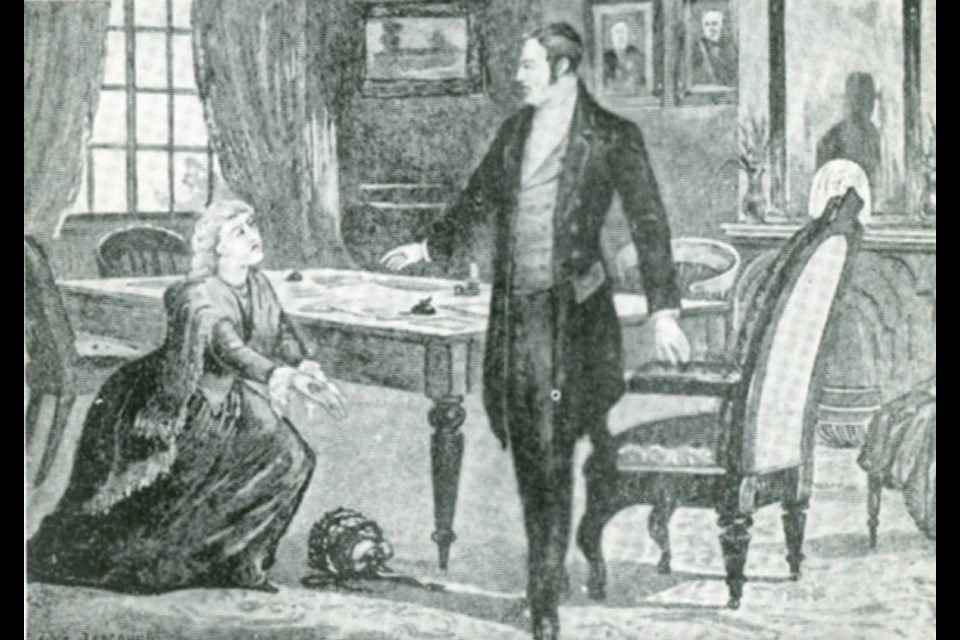In my last Postcard Memories column, I shared the tense standoff at the home of Holland Landing blacksmith and rebel leader Samuel Lount. Today, we’ll delve more into the man himself.
Lount was born in the United States (Catawissa, Pa., to be precise) in 1791. The Lounts emigrated to Upper Canada in 1811. Samuel joined his father, Gabriel, and brother, George, in becoming a surveyor. All three also owned considerable land. Samuel and his father were also active politically, both representing the Reform Party in the Upper Canada Parliament.
In 1815, Lount married Elizabeth Soules and settled in Holland Landing, where he operated a blacksmith shop, farmed, and was part-owner of the first steamboat on Lake Simcoe, the Sir John Colborne. He was, in short, comfortable financially, though not wealthy.
Lount was also one of the leading figures in what was then one of the most important communities north of Toronto. Holland Landing’s mills served communities as far away as Innisfil in the north and Aurora in the south, and its wharfs were the major terminus for all shipping on Lake Simcoe. The community was prospering.
Lount was a close associate of reformist politician and newspaper publisher William Lyon Mackenzie and had a vested interest in enforcing change. He claimed to have evidence that showed Upper Canada Lt.-Gov. Sir Francis Bond Head had been giving land grants to settlers in exchange for their voting against Lount in the elections of 1836, an election the popular Lount lost. In view of this real or imagined corruption, Lount became increasingly radicalized and concluded change would only come about through a violent overthrow of the existing political system.
Mackenzie was deeply popular in the Holland Landing, Bradford, Sharon and the Newmarket region, thanks in large part to the magnetism and influence of Lount, of Holland Landing. Between shoeing horses, Lount would hold secretive meetings, speak out against the corrupt government, and forge spears in anticipation of rebellion.
Events came to a head in early December 1837, when Lount led an army of farmers down Yonge Street in support of Mackenzie’s uprising. As it turned out, the rebellion was quickly put down by government forces at the Battle of Montgomery’s Tavern (Dec. 7), and instead of returning home victorious, Lount was forced to hide out in the woods as a fugitive. Growing desperate, he attempted to flee across Lake Erie in a rowboat but was apprehended and charged with high treason.
Despite a petition signed by 35,000 Upper Canadians (almost a 10th of the population) demanding clemency, Lount was hanged on April 12, 1838.
A memorial stands in Toronto near the site of his execution. Closer to home, a plaque in the memory of Lount stands in front of the Holland Landing branch of the East Gwillimbury Public Library.



